
“Unlike almost all American directors, Jon Jost is not a traitor to the movies. He makes them move.” — Jean-Luc Godard
‘A figure like Jon Jost probably won’t come along again anytime soon. Whether this is a good or bad thing for independent cinema in the U.S. is, quite frankly, an open question. What would the Sundance and Weinstein universe do with someone who has so little use for money, authority or the polite bourgeois pieties that grease the contemporary film industry? Here’s a man who would rather walk away from the material trappings of success, so vitally important to so many, in order to make the work he wants to make. Jost works small, so that he can work true.
‘And yet he is no romantic Luddite. Everyone adapts. If you go to the website of Jon Jost, one of the most fiercely independent filmmakers the U.S. has ever produced, you will find statements on the virtue of digital imaging tools, along with information about renting or purchasing his films and videos from him directly. This includes recent works, made specifically in and for the DV medium, and Jost’s older films, which were shot and edited in either 16mm or 35mm film. While many artists quite understandably lament the inevitable loss of celluloid as a means of aesthetic communication, Jost isn’t looking back, except to get those early works out into the world.
‘Much of the so-called independent cinema of today wouldn’t really be possible without Jost, who spent the 1970s making poetic experimental narratives like Last Chants (for a Slow Dance), Bell Diamond and Slow Moves, usually for a couple thousand dollars apiece. These were films that excavated dominant mythologies, particularly the twin icons of rugged masculinity and the American West, while also finding the time to direct audience attention to the conditions of their making. Actors momentarily slip out of character; a sliver of documentary information disrupts the diegesis; Jost’s own voiceover discusses the filmmaking process, etc. Although none of these films ever made it big, Jost managed to get them seen by enough people around the world to make a name for himself. Prominent international critics considered him a rightful American heir to Jean-Luc Godard.’ — Nashville Scene
‘Jon Jost might be considered the epitome of the aging, alienated and aggrieved independent film director. He is sitting in a borrowed New York apartment in hand-me-down clothes, doesn’t have a place to live and has no visible means of support, other than a coming arts residency at the University of Nebraska.
‘“Most people from my generation became teachers long ago,” Mr. Jost said.
‘For the past four decades Mr. Jost, 63, has been making films on shoestring budgets with no-name casts that almost nobody outside of European film festivals ever sees. Perhaps the closest he has come to popular awareness was All the Vermeers in New York (1990). Since then he spent a decade in Europe toiling away in relative obscurity. From 1972 to 1976, he lived in Montana, where he scrounged from garbage cans and lived with a single mother and her daughter in one room with no heat or running water.
‘In 2004, he stayed in Newport, Ore., at the house of one of the actresses he cast in his most recent film, Homecoming, which he is still trying to find a festival home for domestically — forget about distribution. His income, such as it is, comes principally from selling DVD’s of his work on the Internet. He now lives in Lincoln, Neb.
‘“I can’t say I’m happy not making a living after 40 years in the business,” Mr. Jost said. “I’m not independently wealthy. I’m independently poor.”
‘Mr. Jost’s plight and perseverance constitute an extreme version of the mostly sideways career path followed by many of the generation of independent filmmakers who made a splash in the late 1980’s and early 90’s. When these directors, mostly now in their 40’s and 50’s, got started, the indie business was full of mom-and-pop operations with nickel-and-dime aspirations. Now the corner stores have been edged out by studio specialty divisions with far larger appetites and needs. Geoffrey Gilmore, the director of the Sundance Film Festival, said that in the early 90’s an independent film was considered a hit if it grossed $1 million. Now it’s $25 million.
‘“I’ve spent my life being left out,” Mr. Jost said. “I’d like to stop, but it’s what I do.”’ — John Clark, NYT
___
Stills












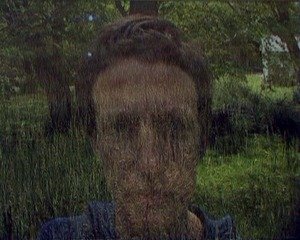

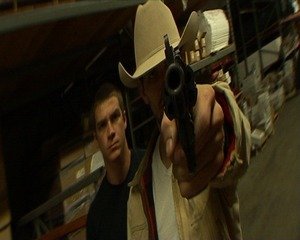







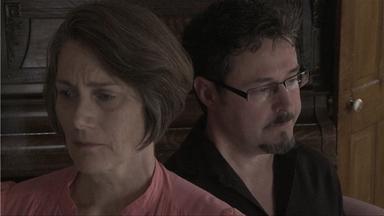







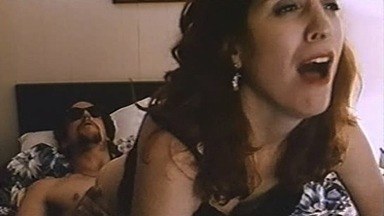




























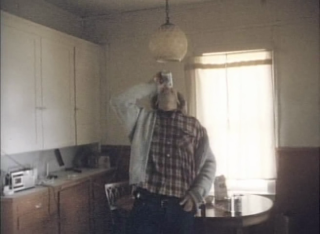

_____
Further
Jon Jost Official Website
Jon Jost @ IMDb
Jon Jost’s Weblog
‘6 Filmmaking Tips Directly From Indie Pioneer Jon Jost’
‘Jon Jost Retires (Sort Of)’
‘Coming to Terms: Diary of a film’
Jon Jost @ Twitter
‘The Big Circus’ by Jon Jost
Jon Jost’s films @ Strictly Film School
‘Notes from Practice’ by Jon Jost
‘PLAIN SONGS: ESSAYING AMERICA’
‘Except for a handful of movies Hollywood is fake’
‘Seventy years of Jon Jost’
‘Never let Mark Rappaport or Jon Jost leave their junk at your house’
‘A “Digital Art Revolution” Interview with Artist Jon Jost’
‘American film maker accuses Portugal’s press’
____
Extras
The Director Talks: Jon Jost
Jon Jost’s portrait by Gérard Courant (1982 – silent)
Digital Dancing with Jon Jost
Sequence from Jon Jost’s ‘Swimming in Nebraska’
Jon Jost interviewed in 2013
______
Interview
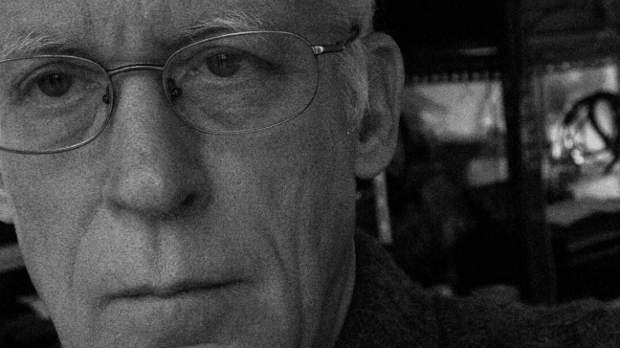
Your approach to narrative filmmaking is really interesting for its production method: having no real hard and fast script that actors have to follow, but also, using a lot of non-actors.
Jon Jost: Sometimes.
Oh, yeah?
JJ: Well, I’ve made tightly-scripted ones too.
Oh, I didn’t realize that. But you do use a lot of non-actors and usually that’s associated with a sort of documentary aesthetic. Did you ever perceive it as such?
JJ: I’m not certain what I perceived at the time I made them. For example, when I say I made tightly scripted films, most of my earlier films-the short films, not the very first short films, but the ones where I started working with sound-were tightly scripted essentially for economic reasons because the first take was always “the” take unless something horrible technical thing happened and made it unacceptable. A practice which I continued with because I think if you prepare right, your first take should be the good take. So I started that-the surest way to be able to make the film-with what were the very, very limited means I had. Then, you know, Speaking Directly, is not a fiction film, it’s an essay film-it was essentially all written visually; it wasn’t all completely preconceived. Angel City (1977) was all scripted except for one deliberately improvised sequence. And then Last Chants for a Slow Dance (1977) was more or less completely improvised around a careful plan. You know, here’s the five scenes we’re going to do, and this is going to do this, and this is going to do that. There was writing involved, but it was a sort of mixture: some of it was written, some of it was to be left open.
And I discovered that I could improvise. If I did the improvising right, I didn’t have to do more takes than I did with a script. And then I saw the virtues of improvising: I got things that I saw immediately that I would have never gotten if I had written it and they’d practiced it. There were usually things I found that were in effect more attractive and interesting to me. I then veered off towards improvising in a very open way. I think that a lot of people when they watch these, they would never imagine they were improvised because they don’t see anything sloppy or out of control. It’s a very clean, lush, seemingly highly controlled work which never had a word on paper about it. Some of the best scenes in it were absolutely wide-open improvising and on the first take. The kind of thing where if you try to do it again, you would just fuck it up-the first take has the magic.
But then The Bed You Sleep In (1993) was scripted, or it was mostly scripted. The word part, like the script, was the dialogue for a handful of scenes without any visual thing; the visual stuff was lots of photographs done with lots of thinking about what to do and how to do it. Maybe little sketches on paper, but never really done while shooting. The actual thing was more spontaneous: “Okay, now we have this very clear idea, lets go find the shots that look right for this thing.” For a period I was adamant about only improvising, and now I like whatever works. We’re doing this scene tightly scripted, the whole movie tightly scripted-whatever works best, I do that.
Working with non-actors wasn’t thought of so much this way at the time. The non-actors were my friends who were willing to be in a movie for free. Later on, I saw what I liked in working with them and got where I liked it. I liked what happened when we juxtaposed a non-actor with an actor. Often times the non-actors feel insecure because they have this supposed professional who supposedly knows what they’re doing. I like what the amateur does to the professional because real professionals are essentially lazy. They have their little grab bag of actoring tricks and if you put them with another actor they’ll ping pong back and forth their little actor tricks, something I don’t like very much. Whereas when you put an actor up with an amateur or a non-professional, he can’t assume that if he throws out a riff he’ll get back the corresponding actorish thing. So suddenly actors have to start thinking and quit being lazy because they basically have a loose cannon opposite them. I like the shift that it causes in the actors, eliminating the kind of predictable things that they would do if they were working with other actors. It gets sort of jostled around a bit and makes them work a little harder.
Obviously your interests as a filmmaker have gravitated towards narrative modes and I have two questions starting with that point. One is why you made Speaking Directly? It seems like a blip, a diversion compared to where you seemed to be going everywhere else.
JJ: Well, if you saw my short films you would see they are very much connected to that one. They’re just sort of loose, lyrical, sort of urban or place portraits. The one that I’m also in is a kind of vague self- portrait. You know, it’s like just before I went to prison: I did the portrait of Chicago in my sort of depressing-but-at-the-same-time- lyrical style. And so I would say the early, or the short films wandered between either completely abstract things, the sort of people-in-a-place type of thing, and attempts at some kind of essays or little stories. Usually the stories were crossed over with essays and Speaking Directly is pretty much an amalgamation of all those things. If you saw my short films, and you saw Speaking Directly, you’d see that there was a pretty natural progression that got me there.
Angel City was a narrative inside some kind of essay/documentary about Los Angeles. That’s why The Last Chants for a Slow Dance is more of a straight, experimental narrative-I kept with the narrative, and had a little less essay. And then there is Chameleon (1978) which is again a more or less narrative work, and then Stagefright (1981), a very experimental essay. So it alternates, part of it just to make it interesting for myself. I keep feeling like I got to shuffle the deck, because otherwise I’d get bored. I’m always mentally or literally working on two or three things simultaneously: films, plus painting, plus whatever it is I can manage to do and. Teresa (my wife) can’t understand how I can juggle all of these things-she has to sit there and say, “Okay, I’m going to think about ‘X’ for the next year and a half and do that.” I’m just the opposite. I don’t have that capacity to concentrate on one thing-to keep it interesting for me, I have to do a bunch of things at the same time, otherwise I get bored.
The other question I have deals with the fact that most people who have economic concerns as artists usually turn to video pretty quickly, but you’ve only done this very recently. And, at least as far as I know, you’ve embraced digital video in a big way. But before this did you have a kind of repulsion to the video image that so many people have?
JJ: I didn’t have a repulsion, or I didn’t think I did. On Plain Talk & Common Sense (1987, shown at YIDFF ’89), for example, there is a kind of raggedy sequence of multiple video screens, which was just a cheap way to get multiple images that I could do at the time. I had a VHS camera at the time that I took around America when I was filming. I didn’t shoot much with it, I confess. I got Hi-8 cameras more or less as soon as they came out and had very much the same idea that some people did. George Kuchar made these all in-camera edited things because you have insert editing, and I had exactly the same idea, though a completely different approach. I find his approach much more interesting than mine was.
We showed Cult of the Cubicles at the last Festival.
JJ: I like his stuff. I particularly like one called Weather Diary-it’s like a 90-minute thing completely done in-camera. It’s a stunningly beautiful piece of work. Vulgar, as usual for him, but . . .
Toilets, Godzillas, and toenails.
JJ: But a lovely piece and with a completely different mentality than mine. Mine was “Okay, now you can do this”; it was like I was reverting to the way I started making sound films. It was like, we program very clearly what we want; we have a little latitude about when to cut in and cut out and we can go drop something in the middle. But I never made anything. I’ve had four Hi-8 cameras and I more or less gave them all away to people, to filmmakers who could no longer afford to make films but whose work I liked. I would end up giving them a Hi-8 camera preaching how good it was and get them to try it out. To my knowledge it didn’t succeed. It sort of succeeded with one but her camera got stolen about four months ago. She had it for a number of years and she did thank me for getting her her eyes back. She is very poor and she hadn’t shot something for some time and I gave her the camera; she has nice vision of some things and she did a fair amount of footage.
While I had these cameras I shot a little bit, but I never seemed to be able to concentrate. I convinced myself that the problem was that I was so habituated to the economic clip of filmmaking that when it wasn’t super costly, my brain took a walk. So I was convinced that the reason I couldn’t really do something on the Hi-8 was because I’m not worried about spending money.
Interesting.
JJ: Well, that was the logic I had and I promise you that I was 100 percent convinced that this was the explanation. I would tell my friends how good Hi-8 was and I was proselytizing for Hi-8 for the reason that you could blow it up to 35mm if you want and it looks good-which it does. But since I never did anything with it, I constructed this rationale that said I don’t like what I’m doing with it because I’m not working hard on it.
And then DV came out. Well, DV tape cost marginally more than Hi-8 tape, but not much, and all of a sudden I’m going, “Wow.” Obviously I didn’t think Hi-8 looked as good as it should. You know, the quantum jump from Hi-8 or even better forms of video to digital video is so big. That’s why I don’t like it when people here say about London Brief, “You have this video.” I cringe, not because I have something against video, but because I would much rather say, “I see you did a new digital piece.” I would like to get rid of this because when people think video, they think a particular look, either a raggedy, horrible VHS or equivalent look from an artsy angle or the Betacam, normal TV sterile look. As far as I’m concerned, digital video just doesn’t look like that. I don’t like to have this sort of albatross of the word “video” stuck on it because people have an instant pre-conception.
Sounds like a repulsion to video to me.
JJ: Well, no, I don’t mind video. Well, frankly, let’s put it this way. It isn’t that I don’t like video for aesthetic qualities. What I don’t like about most video is that I don’t think much of it is very good. Because video is relatively cheap, it isn’t punishing from a financial standpoint, and thus it doesn’t squeeze out people who are no good. Basically it is that brutal. And so you get an awful lot of bad video. I’m not interested in wading through a hundred hours of bad video to see one good hour, and that’s really the kind of ratio you get when you hit video. With film, it’s more like twenty hours to get one good hour. The ratio is pretty different. And lots of it is because video is more accessible for financial reasons. Therefore you get people sticking around in it and getting away with it for a long time. I could name a few right here. Ricky Leacock for example. He doesn’t have an eye, you know. He’s been proselytizing for Hi-8 for a long time. Trouble is I’m not interested in looking at pictures of his friends, of completely mundane images. It’s like the democratic idea that since pencils are cheap, everybody can write. But not everybody is a good writer. Frankly, I’m not interested in reading bad writing, I’m interested in reading the good writing.
I’m not sure I buy your ratios. There are certainly a lot of bad films.
JJ: I agree. But I think just for pure economic reasons, you can make a bad video for twenty dollars. You cannot make a bad movie for twenty dollars. I mean a bad, feature-length-type movie. If you make one or two bad movies, you’ll get tired of spending your own money and getting no reward for it. Or other people will say, “We gave you money once, we gave you money twice, and you gave us a piece of shit once, you gave us a piece of shit twice. And we’re not going to give you any more money.”
I’ve been on the festival circuit for years and the hot kids of 1970, 1980, 1985, and 1990 are usually around for three years and I never see them again. Because maybe they made one interesting quirk film and then that was it. Festivals show lots of bad films: the kid went through the festival circuit this year and then you never see him again because he made another bad film and nobody is interested. There’s always a new kid coming up. You never see them because they don’t do it again: the reward didn’t work. I think the people who hang on in the film world are much more restricted; it’s more punishing because of the money and because it’s literally far more complicated and cumbersome to do film.
Any kind of film is complicated while you can easily tape.
JJ: Right. With film, you’ve got to buy the film, you’ve got to put it in the camera, you’ve got to shoot, you’ve got to carefully take it to the lab and hope they don’t fuck up, and you’ve got to get it back. And you have to have a support apparatus even if it works. It’s punishing if it isn’t rewarding. Whereas, you know, with video, you’ve got your sound and you’ve got your picture for the price of pushing a button.
You know, I like the fact that you brought up Kuchar because I think what’s really special about him is that he’s the person using Hi-8 who has really figured out what it’s all about. And you can tell it in his work. Everything he does with it is so specific to Hi-8 and not any other medium. It’s just spectacular. So, now you’re making a distinction here between Hi-8 and digital video. What do you see that is specific about digital, especially the way you’ve used it?
JJ: Oh, image and sound quality.
_________________
13 of Jon Jost’s 36 films
________________
Speaking Directly (1973)
‘Jon Jost’s SPEAKING DIRECTLY is a feature length autobiographical essay or, as the title indicates, cinematographic notes giving a personal and political reflection on contemporary U.S. life. In particular, Jost examines the relations between our personal lives, U.S. international politics, the media, modes of discourse, and our relation to our geography, our towns and landscape. The film is divided into two major sections: I-THEY and I-YOU. In the I-THEY half, Jost traces out his and our individual connection to the externals of U.S. life. He traces the geography that impinges on us—Jost’s rural Oregon and Vietnam. He examines the concept of home—both one’s house and the United States as a whole. And he traces the connections between oneself and the people one knows directly and indirectly—Jost’s personal acquaintances, and Kissinger and Nixon. We see the “there” of Vietnam, the artifacts of U.S. culture, Nixon and Kissinger, and U.S. economics and imperialism in images which make us question the media representation of these aspects of our lives, realities which our society makes it so hard to grasp directly. Jost contrasts one’s experience of reality with the reified media version of it. Where SPEAKING DIRECTLY works the best, we not only criticize the media versions but also question our and others experiences.’ — Julia Lesage, Jump Cut
Trailer
_______________
Angel City (1977)
‘Jost’s outsider is Frank Goya, a guy with a red shirt, a far-fucking-out-in-the-morning-man delivery, and a fist full of Polaroid snapshots. Ever-cool Goya peers into the camera, announces that he’s a motel-haunting divorce-dick and from then on Angel City is kabuki Raymond Chandler. Hired by the chairman of the world’s largest multi-national conglomerate to investigate the death of his wife (a former Plaything centerfold who only “came after you hit her”), Goya drives around LA, interviews a bartender, is seduced by the chairman’s mistress, solves the case, and gets beat up for his bother.’ — J. Hoberman, Village Voice
Trailer
_________________
Last Chants for a Slow Dance (1977)
‘If Jon Jost’s direction was the stuff of genius, then Tom Blair’s performance as Tom Bates was the stuff of legend. He encapsulated the kind of brutal, honest naturalism that John Cassavetes spent decades trying to coax out of actors like Gena Rowlands and Peter Falk. Blair manages to change emotions from one extreme to another with a swiftness that would have seemed robotic or artificial from another, lesser actor. The fact that these violent mood swings are almost always captured in unbroken long takes gives him an almost sinister presence that spreads unease over the audience. We slowly become morbidly curious of just how far gone Tom Bates might really be.
‘Jon Jost’s Last Chants for a Slow Dance is a fascinating film which seems to stylistically predict the works of Béla Tarr and Jim Jarmusch. Without relying on the over-abused metaphor of the Death of the American Dream, suffice it to say that Jost’s film is a scathing rebuke of traditional American machismo and individualism. Tom Bates is no John Wayne, no Clint Eastwood, no Marlboro Man. He inhabits two wastelands: the plains of Montana and the killing fields of his inner psyche. Is it any wonder that the film ends in violence? Jost wisely realized that Tom Bates’ story could not end any other way.’ — Nathanael Hood
Trailer
_________________
Slow Moves (1983)
‘Fascinating, oddly gripping and often visually stunning. It’s not unlike a Peter Greenaway mystery translated to the dry dusty heartlands of Malick’s Badlands, although here the emphasis is on spiritual paralysis rather than Greenaway’s elegant intellectual conceits. Written backwards from its explosive end, the real Slow Moves doesn’t actually start until you’re leaving the cinema.’ — John Gill, Time Out, London
Trailer
Excerpt
_______________
Rembrandt Laughing (1989)
‘This film is a portrait of the passage of one year in the lives of some San Francisco friends, circa 1988 (before the dot.coming of the city), a slow marijuana hazed story which drifts like the fabled fog, encompassing the quirks and habits of a generation that made the city theirs, if only for a while. Very obliquely Rembrandt Laughing sketches the time and place, encompassing the AIDS epidemic, the casual sexual revolution, the debris of ’68 lingering in the air. A quiet, very San Francisco comedy of life among a small group of friends. Rembrandt Laughing was improvised over the period of about a month by Jost and his friends, mostly acting non-professionals.’ — JJ
__________________
Sure Fire (1990)
‘With David Lynch and Gus Van Sant, Jon Jost is one of the three great U.S. filmmakers currently working. This stunning film, about two interlocking families, marshals an array of avant-garde techniques to convey the inner turmoils of its characters. (More than any other American filmmaker, Jost refutes the idea that interiority is off-limits to cinema.) Yet, Jost also brings documentary realism to Sure Fire. It’s a visionary work that fashions a metaphor for American dismay and desolation out of what may seem initially an unhappy case far afield from our own (presumably) solid, secure lives.’ — Dennis Grunes
Trailer
Excerpt
_______________
All the Vermeers in New York (1990)
‘The woman pauses before a painting by Vermeer, and looks closely at it – she seems ready almost to disappear into it. The man observes her. He follows her from one room in the museum to another. Then back again. It is a quiet, subtle chase something like the long opening sequence of Brian De Palma’s Dressed to Kill, but this is not a thriller, it’s a strange, introspective cat-and-mouse game by Jon Jost, whose All the Vermeers in New York is the kind of film you have to think and think about, and then finally you realize you admire it. Jon Jost has been making films since 1974, at first with the anti-war collective Newsreel. I’ve seen only a few of his films, and thought of him as an “underground” filmmaker, if that word still has any meaning. But this film, beautifully photographed and acted with calm grace, is frankly aimed at the commercial theatrical market; in approach and subject matter, he falls somewhere between Woody Allen’s non-comedies and Eric Rohmer.’ — Roger Ebert
Excerpt & interview with Jon Jost
________________
The Bed You Sleep In (1993)
‘Created by one of America’s most prominent independent filmmakers, THE BED YOU SLEEP IN is an unforgettable, beautifully structured and exquisitely photographed epic tragedy set in a small lumber town in Oregon. Ray (Tom Blair), a struggling lumber mill owner, and his wife Jean (Ellen McLaughlin) receive a letter from their daughter at college accusing Ray of shocking sexual abuses. As the family is torn apart by surfacing secrets and lies, the cataclysm echoes throughout the community and ultimately reveals the apocalyptic betrayal of America.’ — Fandor
Excerpt
Excerpt
_______________
6 Easy Pieces (2000)
‘6 Easy Pieces is a compilation of shots and sequences made over the period 1996 – 1999, which seemed to find themselves draw together by a kind of gravitational attraction. The work is intended as a kind of sampler of the potential aesthetic range of DV and consumer-level NLE systems, though, of course, it is not merely a technical or aesthetic demonstration. It is also a commentary on contemporary arts, past history, creative energies, society, and, shall we say, a grab-bag of the author’s interests, from social observations to the usage of symmetry in religious architecture and music. The work was, more so than the two previous works done in DV, a deeper exploration into the shifts which digital media provoke – not only aesthetically, but, owing to the radically altered financial aspect, to the mode of working and thinking itself. I did not intend to make 6 Easy Pieces: not one shot was made with any intention of using it in a film or with an a priori idea. Rather they were made in process of experimenting with the medium, and it was only after they had been made, and were sitting in the back shelf of my mind that that found a connection and meaning for themselves. This mode of working and of approaching “work” has been for me invigorating creatively and, if you will, spiritually.’ — JJ
________________
Over Here (2007)
‘A long shot with a kind of grunge music hovering over it of a distraught man’s face. A young man sits in a coffee house observing. A few people talk with a French man about politics. A businessman gets a call and must go away on urgent business. A woman closes her notebook and takes her coffee cup to the counter. The young man deftly moves and steals her computer. On a Saturday morning a business executive sits listening to sports and gets a call canceling a game; his associate sits in a cubicle typing distractedly. The two have a conversation about the webpage, about a young man the worker has picked up “to help.” The boss is revealed to be a Vietnam vet, and tells his associate he’s a copyrighter, not a social worker and to get the young man out of his house. The young man lounges around in a nice house, drinking whiskey and watching to TV. His host makes coffee and frets in the kitchen. He then comes to ask the young man to look harder for a job, to help keep the house clean, and he asks where his telephone card and I-pod are. The young man is angered. Later while the young man is on a massage lounger the copyrighter comes to tell him a long family story and then says he’s missing an heirloom and he can no longer trust the man. The young man attacks, strangling him on the floor while cursing “fucking hadji” and leaves the man, perhaps dead. The young man visits his home, sitting silently with his inarticulate parents. In a triptych reminiscent of a religious altar piece, the young man breaks down while his parents look incomprehendingly on offering a mute love, but the young man leaves. The young man is seen under an overpass, homeless, with a young woman sleeping in his lap; he looks guardedly around, and then directly to the viewer.’ — JJ
Trailer
_________________
Parable (2008)
‘Jon Jost’s films have always tended toward parable. Now this is the case again with Parable, the jewel of his Fuck Bush (He Fucked Us) Trilogy. (This overarching title is mine.) Homecoming (2004) homed in on the aftermath of a returning dead soldier; Over Here (2007), of a returning living soldier. Now Jost turns to the Bush-Cheney & Co. assault on individual rights and freedom, its devastation of these, and the linkage between this war at home, on the American citizenry, with the illusory nature of American hopes and promises predating Bush 43. Jost’s parable is a perfect one: crystal-clear, yet elusive, mysterious, irreducible, unfathomable. It was videographed in Lincoln in, as Jost puts it, “the Time of Bush.”’ — Dennis Grunes
Trailer
__________________
Coming to Terms (2013)
‘In 2013, Jon Jost had been active for 50 years as a filmmaker. This led him to wonder whether there had been any point in it all, and Coming to Terms is the indirect answer to that question. An old man (filmmaker James Benning) calls his broken family back together: his two sons with whom he hasn’t spoken for years, as he was unable to accept their choices in life, and their two mothers. While the sons and mothers wonder why they have been called together, the father prepares for their arrival. Jost throws off traditional narrative conventions in order to penetrate to the emotional core of this meditation on death. The conversations between the family members, reproduced in unusual digital compositions, are juxtaposed with tranquil, deserted shots of houses and streets in an undefined American city. It gives the film a grand allure and ensures that the story is implicitly about the greater American family.’ — Rotterdam Film Festival
Excerpt
______________
Bowman Lake (2014)
‘Bowman Lake is a single image film of Bowman Lake, sunrise to sunset.’ — letterboxd
Trailer
*
p.s. Hey. ** David Ehrenstein, One could. ** Quiton, Hi, Parisian. Okay, cool, I’ll email you as soon as I finish this. ** Sypha, Hi. Sure, you can have that date for the post, it’s a done deal. The sooner you can get it to me the better. I’ll be away from the blog from the 31st to the 10th, so no need to send it during that time, but if you can get it to me by a week before the launch date, that should be fine. If not, let me know, and we’ll figure it out. Great, excited, thanks! ** Misanthrope, Hi, G. We can only hope. Awesome that he’s learning French. That’ll serve him well. Shit that the new situation is making that difficult. Did you write to the principal? Yeah, that was when Bjork was with Matthew B. I think he must have sort of dragged her along. T’would be very cool to meet the legendary LPS. and of course to see the legendary you. ** Alex rose, Hi, Alex! Why? I mean why is your internet slow? I don’t know why I’m asking that because back when I lived at the Recollets, which had an early 90s level internet set up, and when doing the blog was like trying to run in a dream, I never knew why. Cool, yeah, the bear book is really ’90s’ for better or worse. Weird how that happened. I’m very glad to hear that you’re no longer ill, sir. My forever weird back went bad on me this weekend so I’m creaking around and moaning at the moment and destined for the chiropractor. Ha ha. Huh, I must have done that post-delivery wtf thing with eBay purchases. I bought an old brass ashtray that was in the form of Satan lying on his back and pulling his robes apart so you could ash his feature-less body that ended up looking a lot less cool than it sounded. But I gave to someone as a Xmas gift. And he loved it. So that may not count? Love you too, Alex! ** Steve Erickson, Hi. There must be a landline phone fetish forum where you could be helped if you really care. Spooky: hearing a message from yourself. I like it. Of course, being a big Spirit lover, I am happy you sprung for the box. I’m going to pick that up when I’m in LA. There was a time when I was teen and thereabouts that Procol Harum was my favorite band. I even made a handmade ‘Procol Harum is God’ t-shirt and wore it around. But now when I try listening to their stuff again I literally can not imagine what I was so passionately thinking. ** JM, Hi! Satisfaction, excellent! Wow, that is strange and mysterious about the total lack of applause. That happened once with a Gisele piece’s performance, and we never could figure out what that meant. Work work in terms of making ‘art’ is fun for me, but not so much right now on a tighter than realistic deadline and when it’s focused for the most part on a project over which I don’t have almost total freedom or ultimate creative control. But that’s just whining, really. It’s cool. I’m learning stuff. That’s ultimately what it’s about. Yeah, it sounds a good time for you to do a lot of intaking. Does the paper you have to do on chlorination of water hold any interest for you at all, or is it just a hitting the marks thing? ** _Black_Acrylic, Nice! Gracias. Good stuff, man. ** Bill, Hi, Bill. Yeah, well, I have this wonky back. Since childhood. And once in a while for no apparent reason it decides to freak out and turn me into a pained, rickety version of me, and it chose Saturday to do that, so I’ve been hobbling and indisposed since then, and, long story short, did not get to go to Presences Electronique. Gisele went, so I’ll get a report today, and if it’s worth passing along, I will. ‘Isle of Dogs’ is open there already? Ooh. Later this week here. ** Dóra Grőber, Hi! I feel confident that ‘PGL’ will be okay and do fine. The people who like it really like it a lot, and there are enough of them that I think the film will find its way. It won’t be super easy, but I’m used to that. It’s never been very easy for anything I’ve ever written or made. I’m glad the trans group went well, and I can imagine the exhaustion from helping it go well. As I’ve already mentioned up above, my weekend kind of sucked because my back got fucked up, so I spent of the days in much discomfort. I did work because I had to, and progress is happening, but nothing has been much fun at all. I think I’m seeing a chiropractor, hopefully today, and that should start to fix it. And, assuming so, I’ll talk about the ‘secret’ product tomorrow. I’m a little too hampered to today. How was Monday? ** Ferdinand, Hi, F. Thank you again so much! It was great on every level, and I’m proud and happy to have been able to provide the space. ** Jeff J, Hi, J. Cool about the cool out of town time. Lemurs are unusually charming things. Yes, I do know a little of Takashi Ito’s work. In fact I don’t know why he hasn’t had a post here. It’s pretty fascinating stuff, yeah. I’ll do a post. I don’t know if I’ve seen ‘Thunder’. Hm. His films so often have one word titles, and I get them confused. The ‘secret’ project, which I’ll be de-secretizing tomorrow, I think, goes well, I think. We’re in a big crunch because it basically needs to be all but ready this week since I head to LA for 10 days on Saturday and Zac does too. It’s mostly fingers crossed on the PGL stuff, but there are some great possible things . Thanks, man. ** Okay. The great Jon Jost is one of the pioneers and creators of the American indie genre. He’s been making always interesting and sometimes amazing films on often very, very small budgets for decades with way, way too little recognition. One of his films, ‘Sure Fire’, is among my all-time favorite films. I highly recommend exploring his really singular work today. See you tomorrow.

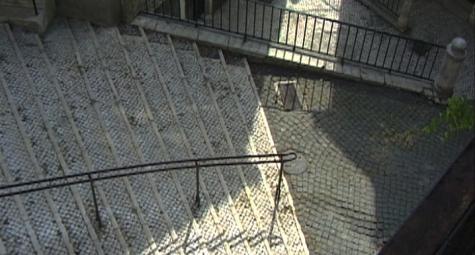




 Now available in North America
Now available in North America 
JON JOST IS THE BEST IN THE WORLD. JON JOST FOREVER. JON JOST ALWAYS. His film Coming to Terms starring James Benning is amazing. So is his short film City. So is his baseball movie I don’t remember the name.
Deadlines are always the least exciting and exhilarating part of making art but every now and then they can be good for the work and for the overall space/vibe surrounding the work so I’m on both sides of the coin for that one. The water-chlorination paper is both interesting and uninteresting to me. I have the marks to hit, but I could also have done it about any other common chemistry-based invention so…. that’s fine, I chose to do water-chlorination BECAUSE the water in our city is for the first time being chlorinated starting uh now-ish? Gross.
J
also Ito is good. I’m a big fan of Screw and Spacy.
Jon Jost is quite unique. “All the Vermeers in New York” is my favorite.
I trust I’m not alone in recalling Oriana Fallaci
Going to LA? How long is that trip? Are you looking forward to the trip? no stop over in NYC. It was a surprise, I ran into Rico on the subway platform near my home the other night.We have a funny shouted conversation across the tracks about both of lives. I might see him again, though he can be mercurial. He has some form of residency and will be performing somewhere here in NY in June. Re-recorded a backing track rhythm track for THEM yesterday, wanting to beef up the sound . Can you support me having the whole thing a bit louder, I’d appreciate that. I think the request will fall on deaf ears. Also began mixing a project I’m producing, it sounds exciting and my suggestions are working, very cool. Still in pain, though it’s receding, feeling it’s probably a good idea that we broke up, though I still miss him beyond words. It was an awesome year and half, though with ugly set backs, won’t miss those. Isle of Dogs, not so much on my radar, since you’ve been pushing it and I have read a couple reviews I will mostly likely go. Really the secret project tomorrow? I’ll believe it when I see, there have been so many teases for you, now I just will have to see, won’t I. lot’s of love
I like “Whiter Shade of Pale” (nice cover by reggae singer Alton Ellis as well) but I’m not sure if I’ve heard another Procol Harum song.
My Sophie Fiennes Interview is finally supposed to take place at 4 PM today.
There’s an animated video out for Czarface & MF Doom’s new single “Bomb Thrown.” The song itself is fine, especially in the final verse, which is delivered by Doom. However, the video, which was directed by Kendra Morris, bites heavily from Lewis Klahr, although given Doom’s persona, it draws more from comic book superhero imagery than he would at this point. Klahr actually directed a few music videos in the ’90s, although he grew disenchanted with this. I feel like if Morris is going to lift so much from his work, the rappers should’ve cut out the middleman and hired Klahr to make the video.
Embarrassingly, I’ve only seen one Jost film, BELL DIAMOND. At this point, they play theatrically in New York about as often as Halley’s Comet can be seen. He’s a constant presence on Facebook, though, and he’s always completely opposed to mainstream cinema and remains uncompromising (which helps explain why his films are so hard to see, alas.)
Okay Dennis, cool, thanks… will probably try to get it to you by April 15th at the latest. It’s been taking a bit longer expected to put together, mainly because a lot of other contributors are involved with it and I’m still waiting on some of them to send me material to use… this is pretty much the first collaborative day I’ve ever had to assemble… will probably be the last for awhile as well, ha ha. But I think the end result will look and read fairly nice.
Hi!
I’m very sure about this, yes. Truly. I’m sure ‘Permanent Green Light’ will find its way. The fact that it’s not “the easy way” only proves that nothing like it has been done before. (Every time we talk about it, I get this wave of desire to see it finally.)
Oh no! Fuck! I’m so sorry your back hurts again! Have you been to the chiropractor? Is it any better by now?
I’m very curious about the secret project!
My day was okay. Pretty uneventful, to be honest. I sent out a few SCAB e-mails and I accidentally burned my lunch to ashes, haha.
I hope you’re feeling better, Dennis!! How are you? How was your day?
Hi Dennis, I just sent you an email.
I’ve been trying to rent All The Vermeers in New York since forever but Jon Jost DVDs have always proved elusive. This Day is therefore a really great resource.
Today I went to see the Anthony McCall show Solid Light Works at the Hepworth gallery in Wakefield. This is a photo of my silhouetted frame in the heavily Instagrammable exhibition space.
https://vimeo.com/jonjost/vod_pages
I never like voicemail it always seemed like a dead people thing to me. I always erase them and if I hear even a part of them I cringe. took off to Athens for a few days. I have the coolest view of the acropolis. fell asleep after going to the hard rock sitting in between a Nancy heart and ginger baker and woke up to half the city on the rooftops outside my window. Athens is like an ancient beach town and it takes me back to youth. the magic mountain. funny the place where Christianity came to Greece is now called dick suck hill lol. find the Greeks seem extremely pleasant and horny. will probably fill my room with Arab boys today. enamoured in greece. talk when I return to Paris xoxo
Here’s my overview of the 2018 “New Directors/New Films” series: http://gaycitynews.nyc/young-blood-wide-net/. I wish they’d chosen PGL.
Dennis, Make movies move indeed. An interesting filmmaker, this Jost. Of course, totally new to me, but better new than never. Thanks.
I’m thinking things are gonna happen as planned in June. LPS wants to do the two summer courses so he’ll be one credit shy of graduating next year and then do that one and…graduate next year. Summer school, from what I can glean, doesn’t start till July 5. That’d be great timing. I’ll probably bring both kids, unless something crazy happens.
I’m giving that vice principal until tomorrow evening. I don’t have a reply by then, the principal’s getting a nice email. 😉